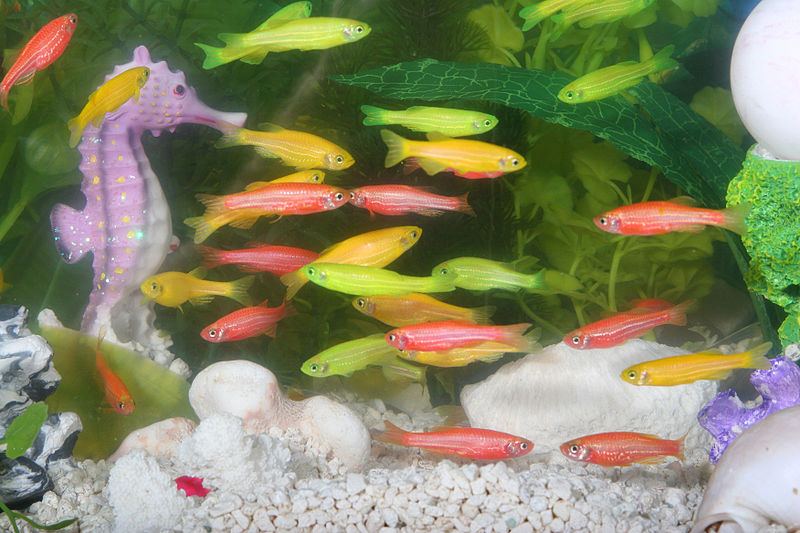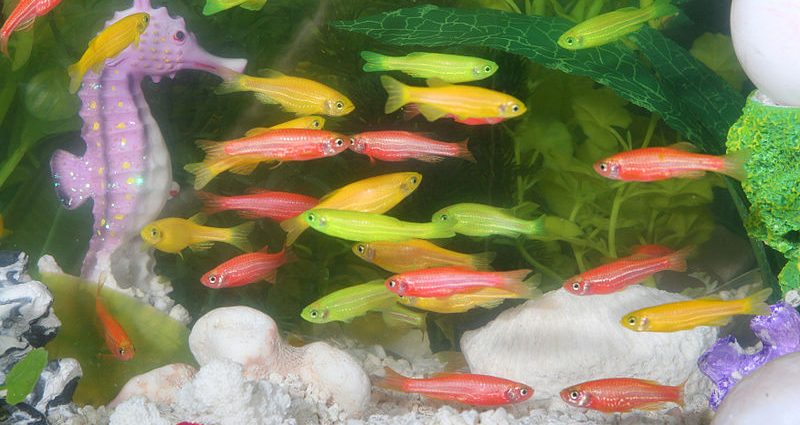 CFN – GMO’s Geneically Modified Organisms. Frankenfoods. There are a lot of buzz words about GMO’s and frankly there’s a scary edge to it all.
CFN – GMO’s Geneically Modified Organisms. Frankenfoods. There are a lot of buzz words about GMO’s and frankly there’s a scary edge to it all.
In the US and many countries there’s a refusal to force manufacturers to clearly label products that use GMO’s. Wheat, Corn, almost all food stocks are now GMO’s and many are used as feed to animals. Look at low chicken and pork prices in the US and what are those animals fed mostly? GMO’s.

Fish that can be bred to glow in the dark? Obesity epidemics. The concepts and applications are so wide that a simple story cannot do this topic any justice.
From Wikipedia:
A genetically modified organism (GMO) is an organism whose genetic material has been altered using genetic engineering techniques. Organisms that have been genetically modified include micro-organisms such as bacteria and yeast, insects, plants, fish, and mammals. GMOs are the source ofgenetically modified foods, and are also widely used in scientific research and to produce goods other than food. The term GMO is very close to thetechnical legal term, ‘living modified organism’ defined in the Cartagena Protocol on Biosafety, which regulates international trade in living GMOs (specifically, “any living organism that possesses a novel combination of genetic material obtained through the use of modern biotechnology”
When I was a kid in the 70’s the news talked about vaccines being implanted into crops in Africa to help fight disease. A noble goal indeed.
Flounder Genes in Tomatoes?
Critics have objected to GM crops per se on several grounds, including ecological concerns, and economic concerns raised by the fact these organisms are subject to intellectual property law. GM crops also are involved in controversies over GM food with respect to whether food produced from GM crops is safe and whether GM crops are needed to address the world’s food needs. See the genetically modified food controversies article for discussion of issues about GM crops and GM food.
Instead this has turned into a vicious money game with big players like Monsanto controlling whole markets with government support.
The big questions other than following the money is simply why not label foods GMO and give the public the choice? Why suppress information? Why suppress studies? Even foods labelled as Organic or with organic practices may be grown from GMO seeds.
Pandora’s boxes are rampantly being experimented with. GMO’s insects like mosquitoes can cause disease and be used as weapons just as easily as not spread diseases such as malaria.
The science of GMO’s is something that can be a boon for mankind and a bane. That’s why it’s so utterly urgent to have measures, standards, accountability, and complete and utter transparency.
The geni is out of the bottle now. At best all we can hope to do is force governments to enact and enforce laws that protect society as best possible.
Do you know what you’re eating? Do you care?
Here is a link to Health Canada’s page on GMO food. LINK
The Government of Canada recognizes that for many Canadians, labelling of foods derived from biotechnology is an important issue of consumer preference or choice. Under a standards committee established by the Canadian General Standards Board, a Canadian standard for voluntary labelling of GE foods entitled Voluntary Labelling and Advertising of Foods that Are and Are Not Products of Genetic Engineering was developed to address non-health and safety labelling (rather, labelling for method of production, for example, whether a food has or has not been produced through genetic engineering).
.
This committee included a broad range of stakeholders, including consumer groups, food companies, producers, general interest groups, universities and government. In April 2004, the national standard was adopted by the Standards Council of Canada. The objectives of the national standard are to provide meaningful criteria for labelling, understandable messages for consumers, and a consistent policy to verify the truthfulness of labels.
You can post your comments below.


You forgot these comments from world food safety experts.
http://www.aaas.org/news/releases/2012/1025gm_statement.shtml
http://www.ama-assn.org/resources/doc/csaph/a12-csaph2-bioengineeredfoods.pdf
and from Europe:
The main conclusion to be drawn from the efforts of more than 130 research projects, covering a period of more than 25 years of research, and involving more than 500 independent research groups, is that biotechnology, and in particular GMOs, are not
per se more risky than e.g. conventional plant breeding technologies…Now, after 25 years of field trials without evidence of harm,
fears continue to trigger the Precautionary Principle. But
Europeans need to abandon this knowingly one-sided stance
and strike a balance between the advantages and disadvan-
tages of the technology on the basis of scientifically sound
risk assessment analysis
A good article but organic production does not permit the use of GMO’s.
GMO is garbage to the hilt. Europe refuses to use such garbage and they prefer organic. GMO kills organic crops. GMO’s cause cancer as well. No wonder they have the sources of reducing the world’s population. No wonder there is so much cancer today as well as other diseases.
GMOs do not cause cancer. In fact on a daily basis GMOs save lives. Anybody on insulin in CFN land? It used to be harvested from the pancreases of dead pigs and cows. Now, thanks to GMO yeast, humans benefit from “human” not animal insulin. And as far as crops go, BT corn is important. It means less pesticide use because the plant can protect itself. The organism, BT, is a natural substance found in soil. By inserting the gene into corn, the BT allows the corn to defend itself. And the parts of the corn BT is found is is not in the parts of the plant we eat. There are so many examples of “good things” about GMOs. Too much for the comment box. Is labelling important? Sure…maybe the general public will become more scientifically literate about the value GMOs offer. Paranoia is a psychological cancer and Frankenfood is a misnomer. Gene mixing through plant and animal hybridization has been going on forever. It’s nothing new. And now that we face issues like climate change, drought resistant crops and sustainable farming couldn’t be more important.
Another useful environmental application of GMOs is bioremediation. Remember the Exxon Valdez oil spill in Alaska? Thanks to the GM bacteria Pseudomonas the disaster clean-up was fast and safe.
There are hundreds of reasons why we should learn more about the value of GMOs.
Next time you hear about someone surviving a heart attack or stroke, you might want to think about tPA…a genetically engineered enzyme that busts up the clots in the vessels that can cause sudden death.
Incidentally, even stone washed jeans are the result of a GM technology.